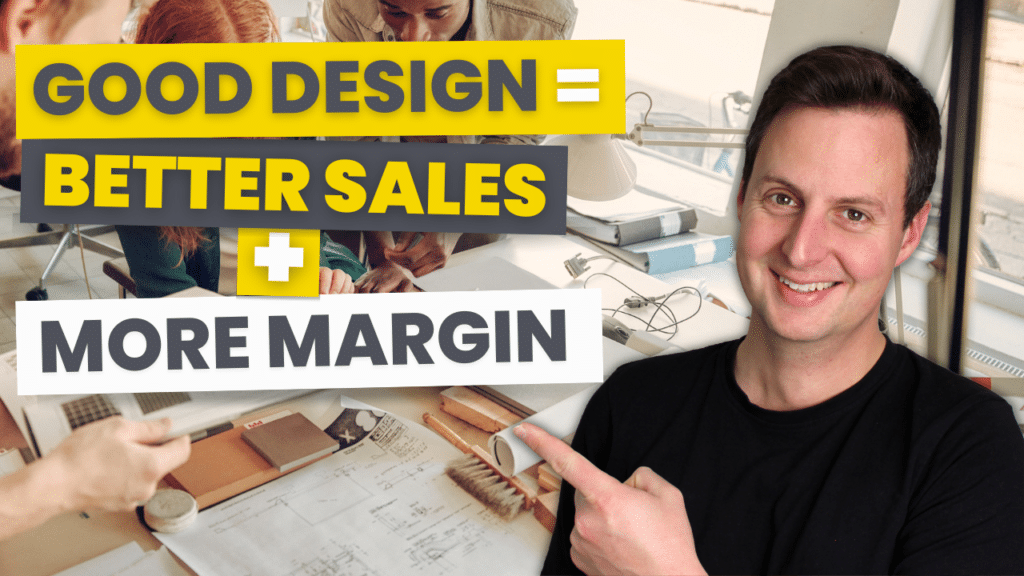Some inventors develop products because they want to make a change in the world. Other people create groundbreaking products to take technology forward. But most entrepreneurs bring new products to market with the goal of generating a healthy profit. Whether you’re just looking to earn enough money to quit your day job, or want to become extremely wealthy selling globally, it’s important to have strong financial goals for your product development and understand how much profit you can expect to net.
The amount of money you can make from your product idea ranges from a very big loss, to a monumental gain. And it all depends on whether you validate your idea, launch at the right time, develop a product that’s functional and desirable, and market it successfully, while keeping costs minimal. In this article, I’m going to use four examples of highly successful companies who have made very respectable profits from their products, two of whom we have worked with.
CouchCoaster & TableCoaster
Our first example is the CouchCoaster product developed with us by our client Barry, along with its sister product the TableCoaster. These two products now turn over £850,000 a year – a brilliant revenue for a one-man business!
Barry is successful because he has an extremely lean business. He has virtually no overhead costs and he doesn’t even see the product. His manufacturers produce it and ship it out internationally to his retailers and distributors, helping to reduce money and time spent getting the product where it needs to go. By keeping these costs very low, he can achieve a high turnover, allowing the business to bring in almost a million pounds every year – without Barry needing to stock anything.
Timer Stat
Our next example is the Timer Stat product developed with us by our client Anthony. Since the product was launched to market in 2016, they’ve turned over £1 million, and are now bringing in over a quarter million pounds yearly. The timer stat product has also catalysed a few similar products in its industry. Just like Barry with the CouchCoaster, Anthony has a very lean business model with slim overhead costs. This allows him to maintain a high turnover and grow the business efficiently, increasing profits every year.
Anthony says he has quickly recouped the costs of developing his product, plus some. In his own words, he has “made many times over the money” he invested into the Timer Stat.
Workmate
Workmate’s story begins in 1961 with a guy called Ron Hickman and a DIY project gone horribly wrong. Ron was using a chair to support an item while he sawed into it. However, Ron accidentally sawed into the chair and split it into two. After this accident, he decided to solve the problem himself by inventing a portable, foldable workbench that the average DIY enthusiast could take advantage of.
At first, Ron’s idea wasn’t taken seriously, and retailers weren’t willing to stock it. So Ron went into business for himself, selling it direct-to-customer. Workmate gradually won people over with its simplicity, portability and ease-of-use. Eventually, the product was licensed to Black & Decker, and since its invention six decades ago, over thirty million Workmates have been sold, making Ron an extremely rich product entrepreneur.
Thanks to his genius idea and commitment to selling it regardless of what retailers initially thought of the Workmate, Ron was able to buy a large house on the island of Jersey and live comfortably, making between £1 and £1.50 per unit in royalties from Black & Decker for every unit sold.
Dyson Vacuum Cleaner
Our last example is the famous British inventor, James Dyson. Nowadays he is the fourth richest man in the UK at the time of writing, worth about thirty billion pounds. And it was all thanks to a series of great inventions and product innovations, starting with the Dyson vacuum cleaner.
Just like Ron with the Workmate, James Dyson’s idea initially wasn’t taken seriously and retailers didn’t want to sell it. Instead of giving up and accepting defeat, James Dyson decided to persevere and sell his product himself. He confidently believed in the value of his product and knew that companies would eventually see the potential of it. And he was correct. In the beginning, Dyson did some licence deals to raise money for manufacturing, before scaling into a worldwide enterprise with mass production taking place in Malaysia.
Both Ron Hickman’s and James Dyson’s stories go to show that you should sometimes take the feedback of industry leaders with a grain of salt. Just because your product is different or unpopular today doesn’t mean it hasn’t got potential, and if you analyse your product logically and open-mindedly, you might realise you’ve stumbled on an amazing idea, and should stick it out to see it eventually succeed.
Persevering with your product marketing is one challenge – but getting to the point of launching your product is a trial of its own. D2M helps people with great product ideas perform market research, prototyping, testing and launching with less of the hassle and cost. Find out more here.
